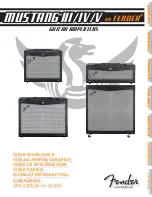
9
Tuning and Final Testing
1.
Connect the second stage to the LP hose and pressurize the regulator with 125
-
145 psi. Using a
5mm hex key, turn the adjustment screw (27) just until there is no air leak.
NOTE: Rotating the adjustment screw clockwise increases spring tension on the poppet, and
increases inhalation effort
(“
cracking effort
”);
counterclockwise rotation decreases spring load
and lowers cracking effort.
2.
Insert the diaphragm assembly (40) in the groove of the case (15). Using a small dowel or other
blunt tool, confirm that the diaphragm rim is fully seated in the groove. Do NOT lubricate the
diaphragm edges.
3.
NOTE: This next step specifically differs from a subsequent
instruction in the translated Scubapro manual.
Before attaching the faceplate, tap lightly with one finger on
the center disc of the diaphragm, and confirm that when the
regulator is pressurized, there is approximately 0.25
-
0.5mm of
separation between the lever and the diaphragm disc. That
separation may disappear when the regulator is depressurized.
Adjust lever height with a
3/32”
hex key in the lever hex screw
(16).
4.
Insert the thrust washer (ring) (41), again ensuring that it is fully seated, and then screw on the
faceplate (retaining ring) (42) using your palm or a suitable tool (PN 43.404.003), until the hole
in the faceplate is aligned with the same hole in the case (15). Note: the thrust washer (41)will
pull the sides of the diaphragm inward slightly as the faceplate is screwed in.
Therefore, tap the
diaphragm disc to confirm that there is a tiny gap between the lever and the diaphragm center
disc (in contrast with Step 6 below). If a gap is not found, remove the diaphragm and adjust the
hex screw (16) counterclockwise to lower the lever fractionally.
5.
Insert the purge button spring (43) into its groove in the case (15). Carefully fit the purge
button (44) into the case, ensuring that the restraining hook at the bottom of the purge button is
inside the cutout in the faceplate. Using pressure against the spring to align the holes in the top
of the purge button with the holes in the case, secure the purge button with the pin (45).
Confirm that the pin enters with some friction, and that it is symmetric on both ends. Operate
the purge button and confirm that it returns freely when pressed.
Deleted from the translated SP manual:
6. Be sure that the lever is in contact with the diaphragm
disc and the value of the cracking effort measured with the Magnehelic shall be in the range
between 1.2
-
1.6 Inch H20. If this is not the case, disassemble the components previously
assembled in the above points 2, [4] and [5] of this chapter, then adjust the hex screw (16) with a
3/32"Allen key, reassemble the components and re
-
adjust the screw adj, (27): rotating clockwise
will increase the inhalation effort. Repeat these operations until you reach the cracking effort
required while at the same the lever is in contact with the diaphragm disc.
It has been this author
’
s observation that if the lever is in contact with the diaphragm when
the regulator is pressurized, diaphragm elasticity may apply a counterforce to the poppet
spring whenever the spring adjuster is screwed in, making tuning unstable. By design, this
theoretically shouldn
’
t occur, due to the presence of a retaining hook at the bottom of the
purge lever which should prevent the diaphragm from being placed under tension by the valve
lever. Nonetheless, tuning instability has repeatedly been noted when Step 6 is followed as
written, and that same instability disappeared when the lever was lowered 0.25
-
0.5mm.
Note however, that lowering the lever decreases maximum valve opening. A significant
decrease in lever excursion could lead to
inadequate air delivery and death
. Therefore,
anyone following these steps must assess for her/himself whether a loss of 0.5mm in lever
excursion is significant. A substitute Step 6 is inserted below.




























